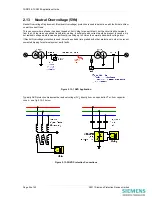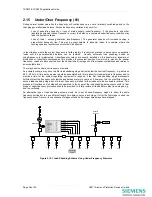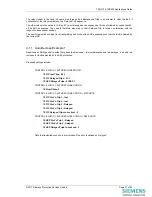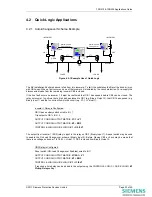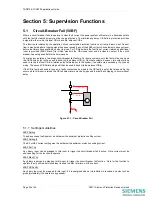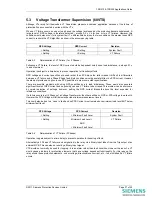
7SR210 & 7SR220 Applications Guide
5.4
Trip-Circuit Supervision (74TCS)
Binary Inputs may be used to monitor the integrity of the CB trip circuit wiring. A small current flows through the
B.I. and the trip circuit. This current operates the B.I. confirming the integrity of the auxiliary supply, CB trip coil,
auxiliary switch, C.B. secondary isolating contacts and associated wiring. If monitoring current flow ceases the B.I.
drops off and if it is user programmed to operate one of the output relays, this can provide a remote alarm. In
addition, an LED on the relay can be programmed to operate. A user text label can be used to define the operated
LED e.g. “Trip CCT Fail”.
The relevant Binary Input is mapped to 74TCS-n in the INPUT CONFIG>INPUT MATRIX menu. To avoid giving
spurious alarm messages while the circuit breaker is operating the input is given a 0.4s Drop-off Delay in the
INPUT CONFIG>BINARY INPUT CONFIG menu.
To provide an alarm output a normally open binary output is mapped to 74TCS-n.
5.4.1 Trip Circuit Supervision Connections
The following circuits are derived from UK ENA S15 standard schemes H5, H6 and H7.
For compliance with this standard:
Where more than one device is used to trip the CB then connections should be looped between the
tripping contacts. To ensure that all wiring is monitored the binary input must be at the end of the looped
wiring.
Resistors must be continuously rated and where possible should be of wire-wound construction.
Scheme 1 (Basic)
Figure 5.4-1: Trip Circuit Supervision Scheme 1 (H5)
Scheme 1 provides full Trip supervision with the circuit breaker Open or Closed.
Where a ‘Hand Reset’ Trip contact is used measures must be taken to inhibit alarm indications after a CB trip.
Page 38 of 40
©2011 Siemens Protection Devices Limited



